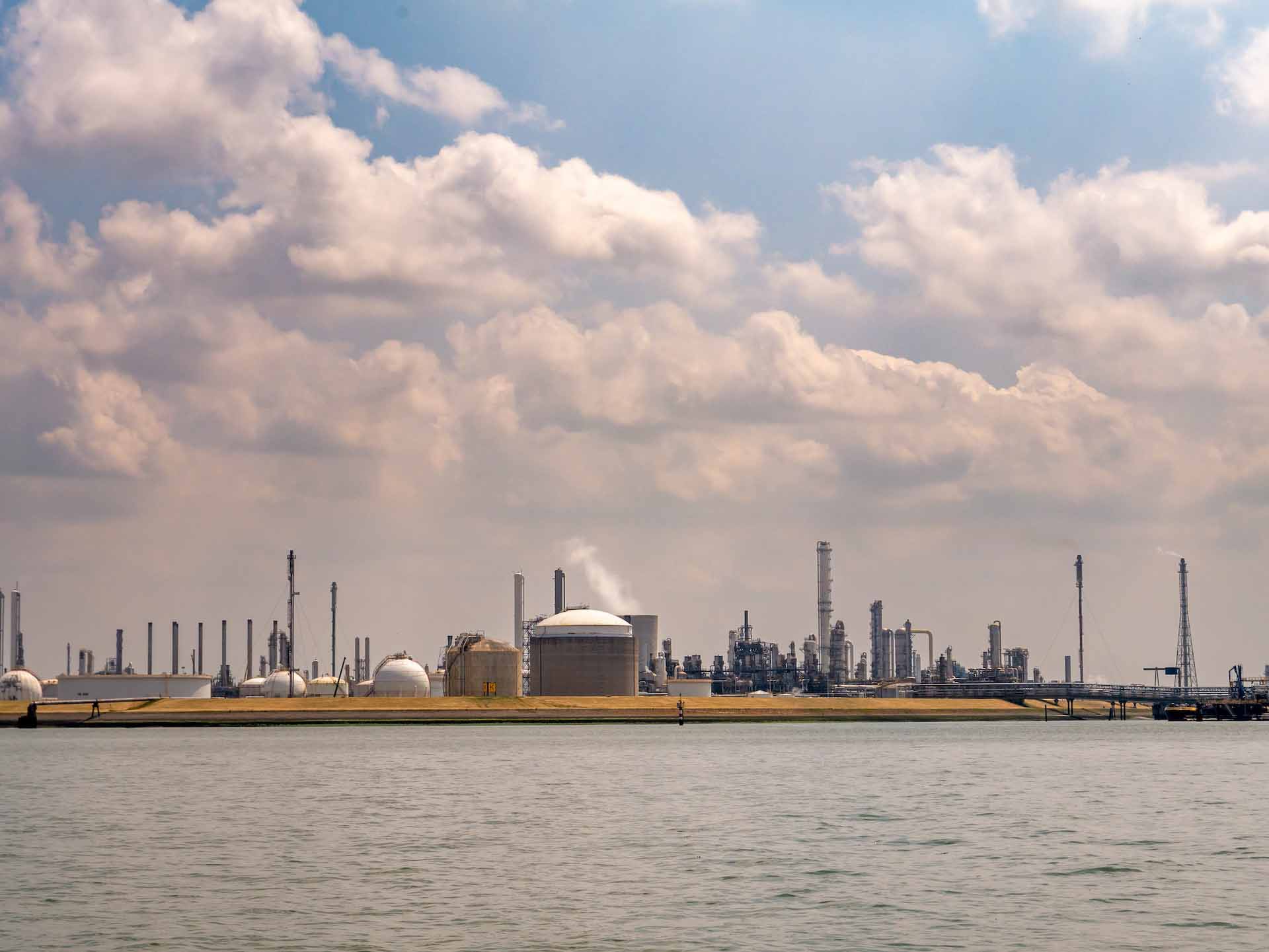Until the 1970s, asbestos was widely used in military and commercial ships, as it was considered the best fire-prevention and heat-resistant material to use for insulation and other products that needed such protection. While ships that have been constructed since then don’t have asbestos built-in necessarily, any ship that was constructed before the 1980s likely has a lot of it and is exposing occupants and crews to this day. Because asbestos was used so widely and in massive amounts in ships built before 1980, many shipyard workers, ship crews, ship passengers, and military personnel who worked on or boarded these ships have likely been exposed and are at risk of developing asbestos-related diseases.
Where Asbestos was Found on Ships
While asbestos was used widely in the construction of essentially all ships before the 1980s, it was especially prevalent in the Navy, Coast Guard, and other military ships. Any veterans or workers who served on these ships were most likely exposed to asbestos, particularly if they worked below deck in boiler rooms or made repairs throughout the ship. Additionally, any shipbuilders who built these ships were exposed to asbestos, if not more so than anyone else.
Shipbuilders used a large number and variety of asbestos products to build commercial and military ships in engine rooms, boiler rooms, and for insulation throughout the ships. Common asbestos products that could be found in ship construction included:
- Block insulation
- Adhesives
- Sealers
- Boilers
- Cables
- Brake linings
- Flooring
- Insulation
- Gaskets
- Paneling
- Roofing
- Piping
- Pumps
Boiler rooms were one of the main concerns because they had such a high fire risk and produced a lot of heat, so these were protected with asbestos products. Insulation in boiler rooms had an estimated 15% makeup of asbestos and was produced in a way that made it easily movable when repairs were required. This meant that asbestos fibers were released constantly because they were always being disturbed.
Asbestos is technically safe when it isn’t being disturbed, but when it is, those exposed run the greatest risk of developing asbestos-related diseases. Add to that the close quarters and poor air circulation below deck, and you’ve got a high-risk situation. Even the smallest moments of asbestos exposure can lead to asbestos-related diseases, not just continual exposure (although time exposed is an indicator of the likelihood of developing an asbestos-related disease).
List of Military Ships Built With Asbestos Products
Thousands of ships, both commercial and military, were constructed with asbestos products. Commercial ships with asbestos have been harder to track, but it’s been easier to identify ships in the military that typically had been built with asbestos products. Let’s take a look at the types of ships that were built with asbestos products and known military craft that had asbestos.
Aircraft Carriers
Used to transport aircraft during wartime, aircraft carriers needed fireproofed structures and were perfect candidates for asbestos product use. Aircraft carriers containing asbestos served in World War II, the Korean War, the Vietnam War, and the Cold War. Military personnel who served on these ships were at high risk of exposure to asbestos and accounted for 30% of mesothelioma diagnoses. The risk of exposure continues, as many of these ships are retired and repaired for historical purposes.
Here’s a list of ships with known or possible asbestos use and their status in the fleet:
Active
- USS Abraham Lincoln
- USS Carl Vinson
- USS Dwight D. Eisenhower
- USS Enterprise (CVN-65)
- USS George HW Bush
- USS George Washington
- USS Harry S Truman
- USS John C. Stennis
- USS Nimitz
- USS Ronald Reagan
- USS Theodore Roosevelt
Scuttled
- USS America
- USS Constellation
- USS Forrestal
- USS Independence (CVL-22)
- USS Independence (CV-62)
- USS Oriskany
Decommissioned
- USS John F. Kennedy
- USS Kitty Hawk
- USS Saratoga (CV-60)
Scrapped
- USS Antietam
- USS Bataan
- USS Belleau Wood
- USS Bennington
- USS Bon Homme Richard
- USS Boxer
- USS Bunker Hill
- USS Cabot
- USS Coral Sea
- USS Cowpens
- USS Enterprise (CV-6)
- USS Essex
- USS Franklin
- USS Franklin D. Roosevelt
- USS Hancock
- USS Kearsarge
- USS Lake Champlain
- USS Langley
- USS Leyte
- USS Monterey
- USS Philippine Sea
- USS Princeton (CV-37)
- USS Randolph
- USS Ranger (CV-4)
- USS Saipan
- USS San Jacinto
- USS Shangri-la
- USS Tarawa
- USS Ticonderoga
- USS Valley Forge
- USS Wasp (CV-18)
- USS Wright
Keel Laid
- USS Gerald R. Ford
Sunk
- USS Hornet (CV-8)
- USS Langley
- USS Lexington (CV-2)
- USS Princeton (CVL-23)
- USS Saratoga (CV-3)
- USS Wasp (CV-7)
- USS Yorktown (CV-5)
Museum
- USS Hornet (CV-12)
- USS Intrepid
- USS Lexington (CV-16)
- USS Midway
- USS Yorktown (CV-10)
On Donation Hold
- USS Ranger (CV-61)
Cancelled
- USS Iwo Jima
- USS Reprisal
Amphibious Warships
Designed to land ground force cargo and support United States Marines when they’re on land, amphibious warships were and are essential to combat and were insulated with asbestos. They were primarily commissioned in the 1940s to support World War II efforts.
There have been hundreds of amphibious warships that had asbestos products. Asbestos was used on piping throughout the ships and the sailors on these warships were in close quarters with poor ventilation. It’s safe to assume that you should see a doctor to monitor you for symptoms of asbestos-related illnesses if you were ever on an amphibious warship.
Battleships
Battleships were also built with asbestos due to their need to be able to protect against extreme heat and fire. Battleships carried thousands of passengers at a time, putting them all at risk of exposure to asbestos (most unknowingly).
Here is a list of battleships (and their current status) that had known asbestos or were suspected of having asbestos products onboard:
- USS Alabama (Museum)
- USS Massachusetts (Museum)
- USS Missouri (Museum)
- USS North Carolina (Museum)
- USS Texas (Museum)
- USS Wisconsin (Museum)
- USS Arizona (Sunk)
- USS Arkansas (Sunk)
- USS Idaho (BB-24) (Sunk)
- USS Nevada (Sunk)
- USS New York (Sunk)
- USS Oklahoma (Sunk)
- USS Pennsylvania (Sunk)
- USS Utah (Sunk)
- USS California (Scrapped)
- USS Colorado (Scrapped)
- USS Delaware (Scrapped)
- USS Florida (Scrapped)
- USS Idaho (BB-42) (Scrapped)
- USS Indiana (Scrapped)
- USS Kansas (Scrapped)
- USS Maryland (Scrapped)
- USS Michigan (Scrapped)
- USS Minnesota (Scrapped)
- USS Mississippi (BB-41) (Scrapped)
- USS New Hampshire (Scrapped)
- USS New Mexico (Scrapped)
- USS North Dakota (Scrapped)
- USS South Carolina (Scrapped)
- USS South Dakota (Scrapped)
- USS Tennessee (Scrapped)
- USS Vermont (Scrapped)
- USS Washington (Scrapped)
- USS West Virginia (Scrapped)
- USS Wyoming (Scrapped)
- USS Iowa (Unknown)
- USS New Jersey (Unknown)
- USS Mississippi (BB-23) (Sold to Greece)
Cruisers
Over 140 United States Navy cruisers that were constructed and repaired contain asbestos products. Any shipbuilders, crews, or military personnel aboard these is assumed to be at risk of asbestos exposure. They were used in wartime, with appearances in World War I, World War II, the Korean War, the Vietnam War, and the Cold War. Asbestos was primarily used for insulation and piping on cruisers.
Destroyers
Hundreds of Navy destroyers that were constructed and repaired contain asbestos products. There were over 300 destroyers used in World War II alone, meaning thousands of people were exposed to asbestos. These destroyers were instrumental in offensive and defensive strategies, making them a popular choice in wartime. They were used in World War I and World War II and typically had asbestos in the insulation and piping.
Minesweepers
Over 300 minesweepers were responsible for clearing open areas of mines so that larger warships could safely pass through during wartime. These had some of the greatest amounts of asbestos on board, given their job, and were primarily used in World War II. It can be assumed that any shipbuilders, crewmembers, repairmen, and military personnel aboard these minesweepers were exposed to asbestos.
Submarines
Submarines were also some of the most asbestos-ridden ships in the military fleets, and they had incredibly poor ventilation. Any person who built or spent any amount of time on submarines can be assumed to have been exposed to asbestos.
The Dangers of Exposure to Asbestos
If you were a shipbuilder or spent any amount of time on an asbestos-ridden ship, whether commercial or military, you are at high risk of developing mesothelioma or another asbestos-related disease. Millions of men in women in the shipbuilding industry, or who worked on ships were very likely to have been exposed to asbestos before the 1980s. While you may be symptom-free, it’s important to monitor your symptoms and health, as asbestos-related diseases can take 10-50 years to develop after initial exposure.




